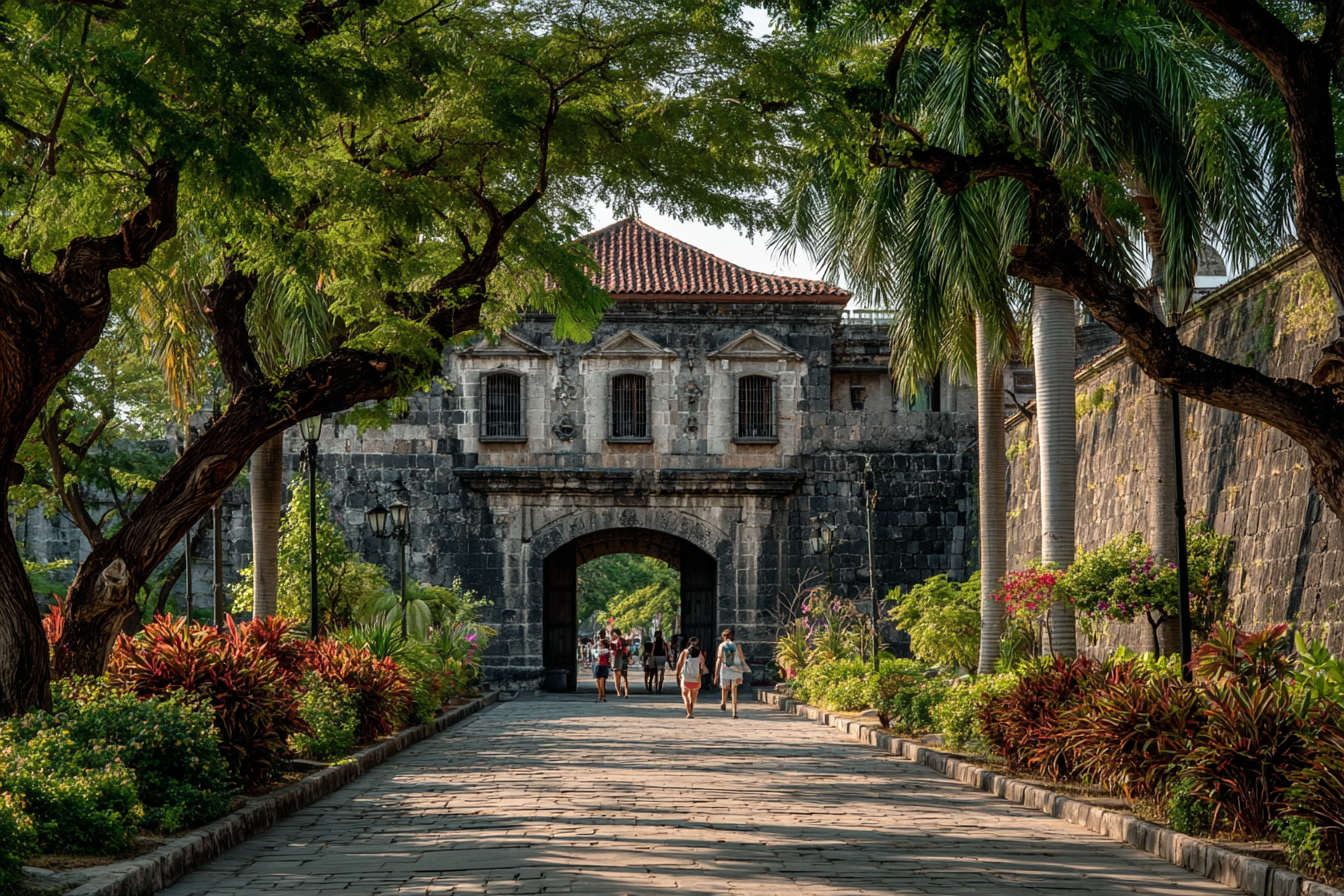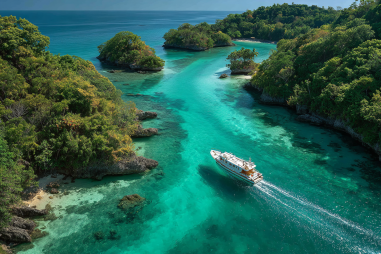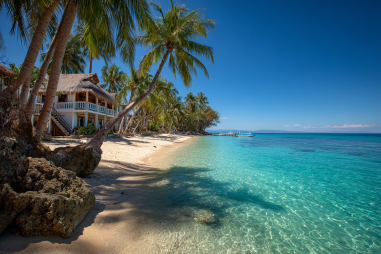Manila, the bustling capital of the Philippines, serves as a vibrant testament to centuries of history and cultural exchanges. From its origins as a small fishing village to its transformation into a colonial stronghold, the city is dotted with remarkable sites that tell stories of resilience, conflict, and heritage. Embarking on a Manila historical sites tour is like stepping back in time, offering visitors a chance to uncover the fascinating layers that make up this dynamic city. Whether you’re a history enthusiast or a curious traveler, exploring Manila’s landmarks reveals the enduring spirit and rich cultural tapestry of the Filipino people.
Fort Santiago and Its History
One of the most iconic historical landmarks in Manila, Fort Santiago stands as a symbol of the city’s colonial past and its struggle for freedom. Located within the walled city of Intramuros, Fort Santiago was originally built by Spanish conquistador Miguel López de Legazpi in the late 16th century. This fortress served as a defense stronghold against invaders and pirates, guarding the entrance to the Pasig River and the city itself.
Walking through the stone archways and courtyard, visitors can explore the dungeons where revolutionaries were imprisoned during different eras, including the famous national hero José Rizal. Rizal’s arrest, imprisonment, and eventual execution at Fort Santiago mark a poignant chapter in Philippine history. Today, the fort has been converted into a beautifully maintained park and museum, with informative memorabilia that sheds light on its significance. For anyone on a historical tour, Fort Santiago offers a solemn yet inspiring glimpse of Manila’s colonial and revolutionary past.
Intramuros Walls and Gates
Encircling the heart of old Manila, the Intramuros walls are a formidable reminder of the city’s fortified past. Built primarily during the Spanish colonial period, these massive stone walls were designed to protect the inhabitants from foreign invasions and local uprisings. Stretching approximately 2.5 kilometers, they enclose what was once the political, military, and religious center of the Spanish empire in the Philippines.
The walls are punctuated by several gates that historically served as entry and exit points for travelers, traders, and soldiers. Notable gates include the Fort Santiago Gate, Puerta Real, and the moated postern gates like the Puerta de Santa Lucia. Each gate has unique architectural details and stories, reflecting the various purposes and bustling activities that once took place. A walk along these walls offers visitors the chance to appreciate the strategic ingenuity of city planners during that era while enjoying views of both Intramuros and the modern cityscape outside.
San Agustin Church and Museum
San Agustin Church, a UNESCO World Heritage site, is the oldest stone church in the Philippines and an outstanding example of Baroque architecture in Asia. Located inside Intramuros, this beautifully preserved church has stood resilient through centuries, including earthquakes and wars. Its thick walls, intricate carvings, and stunning trompe-l’œil ceiling paintings create an awe-inspiring atmosphere for visitors.
Adjacent to the church is the San Agustin Museum, which houses a collection of religious artifacts, colonial-era artworks, documents, and statues. The museum offers insights into the cultural and spiritual life of Manila during the Spanish period. For those interested in history and architecture, this site is a must-visit, providing a rich blend of art, faith, and heritage.
Rizal Shrine and Park
Dedicated to the Philippines’ national hero, Dr. José Rizal, the Rizal Shrine and Park hold an important place on any Manila historical sites tour. Located in Rizal Park (also known as Luneta Park), the shrine is a museum housed in Rizal’s reconstructed family home. It contains personal memorabilia, writings, and historical exhibits that chronicle Rizal’s life and his contributions to Philippine independence.
The park itself is a major cultural and historical landmark, serving as the site of Rizal’s execution by firing squad in 1896—a pivotal event that galvanized Filipino resistance against Spanish colonial rule. The wide green spaces, statues, and monuments make it a peaceful place to reflect on the nation’s journey toward freedom. Visiting the Rizal Shrine and Park provides both a historical education and a moment of contemplation on the sacrifices made for the country’s liberty.
Walking Tour Tips and Guides
Exploring Manila’s historical sites on foot is one of the best ways to truly engage with the city’s rich past. Walking tours allow you to absorb the ambiance of Intramuros and its surroundings at your own pace while discovering hidden gems between landmarks.
To get the most out of your tour, consider these tips:
- Hire a knowledgeable local guide: Local guides offer in-depth stories and context that you might miss on your own, enriching the experience considerably.
- Wear comfortable shoes: Expect to walk on cobblestone streets and uneven surfaces.
- Stay hydrated and bring sun protection: Manila can be hot and humid, especially during midday.
- Plan enough time: Allocate at least half a day to explore Intramuros and its key sites thoroughly.
- Use a map or app: Navigational aids can help you track the sites and make sure you don’t miss any important points.
Best Times of Day for Visits
Timing can greatly enhance your Manila historical sites tour experience. The early morning or late afternoon visits are ideal for avoiding the intense heat and crowds. Early morning hours usually offer cooler temperatures and a quieter atmosphere, which is perfect for photography or quiet reflection. Late afternoons, especially near sunset, bathe the old walls and buildings in warm, golden light, making the scenery even more picturesque.
Avoid peak midday hours when the sun is strongest, as it can be uncomfortable to walk and explore, particularly during the Philippine summer months. Many historical attractions operate during regular daytime hours, so planning ahead and arriving early will ensure you have ample time to enjoy each site at leisure without rushing.
A Memorable Journey Through Manila’s Past
Taking a Manila historical sites tour is like opening a living book whose pages recount tales of colonial power struggles, national heroes, religious devotion, and enduring culture. From the bastions of Fort Santiago to the solemn sacred spaces of San Agustin Church, each site offers a window into the city’s complex history. Complemented by the tranquil Rizal Park and the historic Intramuros walls, these landmarks combine to create an unforgettable journey through time.
Whether you explore independently or with a guide, visiting these sites not only enriches your understanding of Manila but also creates meaningful connections with the lived experiences of those who shaped the Philippines. So pack comfortable shoes, bring your curiosity, and prepare to be transported through centuries on a historical adventure that reveals the heart and soul of Manila.







